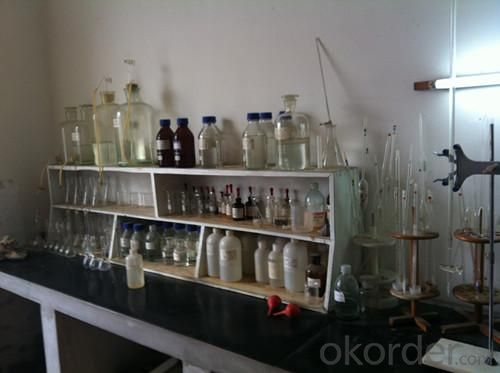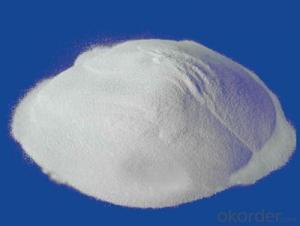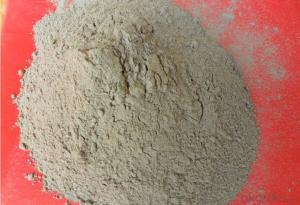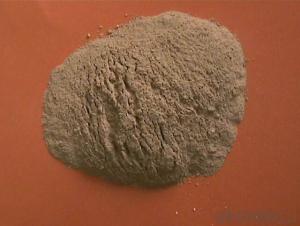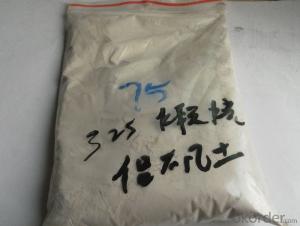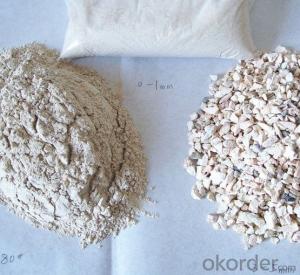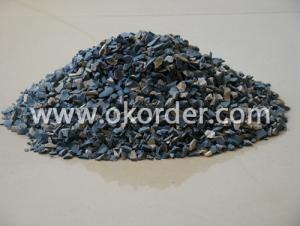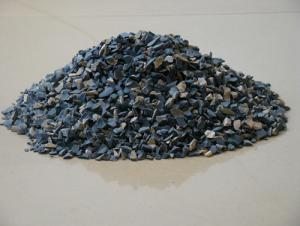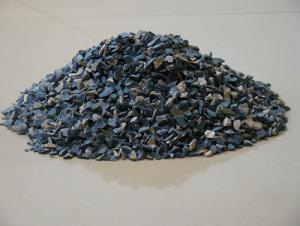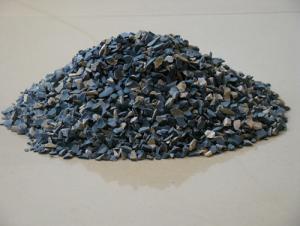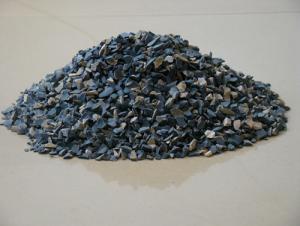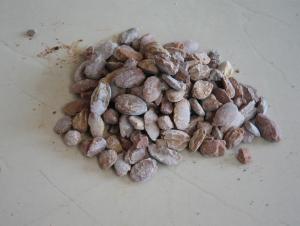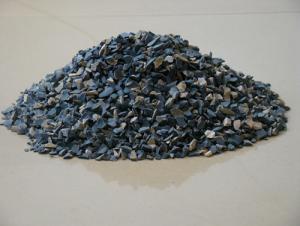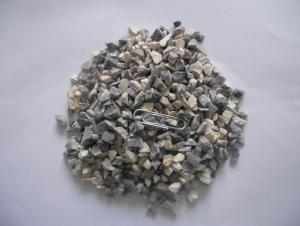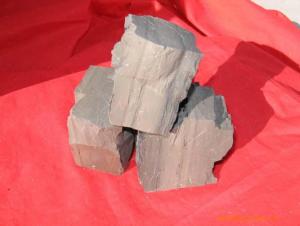Calcined Bauxite Rotary Kiln Al2O3 87%
- Loading Port:
- China Main Port
- Payment Terms:
- TT or LC
- Min Order Qty:
- 50 Metric Ton/Metric Tons m.t.
- Supply Capability:
- 20000 Metric Ton/Metric Tons per Month m.t./month
OKorder Service Pledge
OKorder Financial Service
You Might Also Like
Quick Details of Calcined Bauxite Rotary Kiln Al2O3 87% :
Place of Origin:China mainland
Material:Alumina block
Al2O3 Content(%):87%min
Refractoriness(Degree):1770℃<Refractoriness<2000℃
Shape:Block
Specifications of Calcined Bauxite Rotary Kiln Al2O3 87% :
|
Al2O3 |
87%min | ||
|
SiO2 |
7%max |
|
|
|
Fe2O3 |
2.0%max | ||
|
TiO2 |
4.0%max | ||
|
K2O+Na2O |
0.6%max |
|
|
|
B.D. |
3.0-3.10g/ccm | ||
Size:All sizes according to customers’requirements
Standard:Industry standards
Packaging & Delivery of Calcined Bauxite Rotary Kiln Al2O3 87%:
Packaging details:1mt big bag or according to customers’ requirements
Delivery:7-15 work days after the order is confirmed
Competitive Advantages:
High Heat-resistance.
High Purity & Good Quality.
Timely delivery & service
Good company reputation
Competitive Price & Reputable Supplier.
Usage/Applications:
1.Aluminium industry. Used in national defense, aerospace, automotive, electronics, chemical industry, daily necessities, etc.
2. Precision casting. Alumina clinker made after the mould precision casting processed into fine powder. Used in military industry, aerospace, communications, instrumentation, machinery and medical equipment department.
3.Refractory products. High bauxite clinker refractoriness is as high as 1780, chemical stability strong, and good physical properties.
4.Aluminum silicate refractory fiber. With light weight, high temperature resistance, good thermal stability, low thermal conductivity, heat capacity is small and the advantages of resistance to mechanical shock. Used in iron and steel, nonferrous metallurgy, electronics, petroleum, chemical, aerospace, atomic energy, defense and other industries.
5. In magnesia and bauxite clinker as raw materials, add the appropriate binder, used for pouring ladle whole ladle lining has particularly good effects.
6.Manufacture alumina cement, abrasive materials, ceramic industry and chemical industry can be aluminum of various compounds.
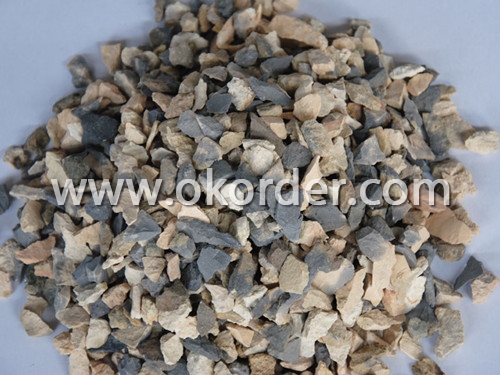
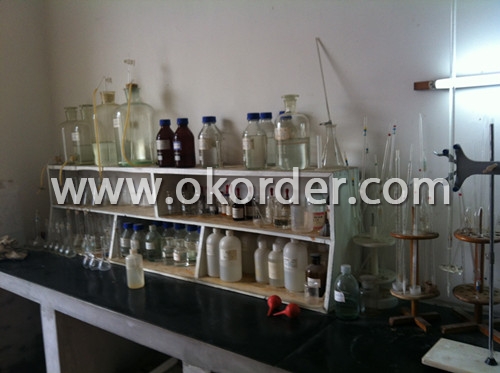
- Q: Which company needs the new refractories?
- The power plants are mainly used in steel plant, lime kiln, coking plants, boilers, etc. I will try my best to answer what I can. There are too many glassworks. You can tell me more anout what you need. As long as there is a large kiln business, the refractories and aluminum manufacturer are needed.
- Q: What is the fire resistance thickness of the thin fire-retardant coatings?
- There is no detailed requirement on the thickness of the thin steelwork fireproof coatings in the "Code for application technology of steelwork fireproof coating", and the thickness there refers to a certain thickness which must(at least) have fire resistance for a certain time. The thickness of fireproof coatings in engineering generally depends on the manufacturer's test reports. Our thin steelwork fireproof coatings: the fire resistance is 2.5 hours, the thickness is 4.9 mm, the fire resistance is 2.0 hours, the thickness is 3.5 mm, the fire resistance is 1.5 hours, the thickness is 1.75 mm, the fire resistance is 1.0 hours, the thickness is 1.17 mm.
- Q: What are the electrical fire protection materials?
- Flame retardant organic resin: They can be classied into PVC, vinyl chloride, chlorinated rubber, epoxy resin emulsion, epoxy resin, phenolic resin, etc.. Fire retardant additive: Phosphorus and halogens, nitrogen organic compounds (chlorinated paraffin, tributyl phosphate (TBP) and polybrominated diphenyl ethers) and boron (boric acid, zinc borate, boric acid aluminum), antimony, aluminum, zirconium inorganic compounds.
- Q: Which kind of refractory floor is easy to use? ?
- Since it is used in public places, fireproofing is quite important.
- Q: Which schools are the best schools in the world for learning knowledge about refractories?
- If you search on a worldwide scale, I might say you are ambitious!!! This major becomes an unpopular one and you must have to embark on graduate and PhD to specialize in it provided that you want to go abroad for further study. Wuhan University of Science and Technology may be the best school in this field with its close relatinship with many refractory manufacture factories across the country. Henan University of Science and Technology is also advisable in terms of this major, which probably promise you a job. Other universities in this regard are not quite familiar to me. You raised these questions, which shows that you are a layman to this major or not quite familiar with this major. If you have any questions, you can resort to me if I can.
- Q: What are the raw materials of refractory?
- Refractory is mainly resistant to high temperature and fire. Sic refractories are widely used in refractory. I hope my answer will be helpful to you.
- Q: What's the frequently used refractory material?
- Refractory material is generally used in industrial departments like metallurgy, glass, cement, ceramics, machinery, hot working, petrochemical industry, power and national defense. Frequently used common refractory: silica?brick, semi-silica brick, clay brick, high alumina brick, magnesia brick, etc. Frequently used special refractory: AZS brick, corundum brick, direct-bonded?magnesia-chrome?bricks, carborundum brick, calcium oxide, chromium hemitrioxide, alumina, magnesium oxide, etc. Frequently used fireclay insulating refractory: diatomite product, asbestos product, insulation?board, etc. Frequently used unshaped refractory: ramming refractory, refractory castable, plastic refractory, refractory mortar, gun-mix refractory, refractory coating, lightweight refractory?castables, etc.
- Q: How many external wall thermal insulation fireproof material are there
- External wall thermal insulation materials are generally divided by the burning grade, into class A, B grade. Grade A is non combustible material, grade B is combustible material. Class A which can be divided into thermal insulation mortar, bakelite plate, rock wool plate, foam cement plate etc.. Insulation mortar is relatively good, easy for construction, convenient, low cost, but its production process is too simple, so it is prone to fake. I recommend you to find a large manufacturing factory that posses complete procedure, for example, provincial production record, the provincial use record, municipal record, tset report at or above the provincial level, state fire proof report, design drawings of office building. product will not be safe if there is a lack of any of these documents. Burning level for henolic is uaually class B, but class A2 can be reached if a thin layer of mortar is applied on the suface,(A1 is the highest level of fire safety),intensity of phenolic is not high, finger pressing will leave a pit on it. if classified according to kilogram, raw material differs greatly every 10 kilogram. Rock wool is also classified by kilogram, general using 150kg wool. Rock wool are now comprounded with average strength. It will easily absorb water, having trouble applying paints. Foam cement strength is not high, easy to absorb water, It is not resistant to falling. It costs low, only used unless little profit can be made, Do not use it if worrying accidents would happen. These materials can be firstly burned, The palce the sample into water to see if it will dufuse at last. External wall should stand up to wind and rain. In terms of thermal insulation, they are almost the same, shows little differences on design thickness.
- Q: Are there any differences between insulation and refractory materials ?
- Refractory materials can resist more than 1200 degrees, some of which are not insulation materials, such as firebricks, which can directly contact with heat source, has little insulation effect. Ceramic fiber, high silica, etc. are all refractory materials which can insulate. Insulation materials with poor performance usually is lower than 800 degrees, which have large thermal resistance, and low thermal conductivity, high porosity. Thus they reduce the thermal loss. To put it simply, insulation materials store most of the heat and only let a small part of heat lose through the air, thus the heat has been isolated. Glass fiber, rock wool, flexible material for thermal insulation, etc.
- Q: What kinds of refractory materials that can resist 3,000 Celsius degree?
- I think that graphite is the only one.
1. Manufacturer Overview
| Location | Tianjin,China |
| Year Established | 2006 |
| Annual Output Value | Below US$1 Million |
| Main Markets | Mid East;Western Europe;Japan;North America |
| Company Certifications | The Authentication certificate of Quality Management system |
2. Manufacturer Certificates
| a) Certification Name | |
| Range | |
| Reference | |
| Validity Period |
3. Manufacturer Capability
| a) Trade Capacity | |
| Nearest Port | Tianjin |
| Export Percentage | 61% - 70% |
| No.of Employees in Trade Department | 50 People |
| Language Spoken: | English;Chinese |
| b) Factory Information | |
| Factory Size: | Above 300,00 square meters |
| No. of Production Lines | Above 5 |
| Contract Manufacturing | Design Service Offered |
| Product Price Range | Average |
Send your message to us
Calcined Bauxite Rotary Kiln Al2O3 87%
- Loading Port:
- China Main Port
- Payment Terms:
- TT or LC
- Min Order Qty:
- 50 Metric Ton/Metric Tons m.t.
- Supply Capability:
- 20000 Metric Ton/Metric Tons per Month m.t./month
OKorder Service Pledge
OKorder Financial Service
Similar products
Hot products
Hot Searches
Related keywords





